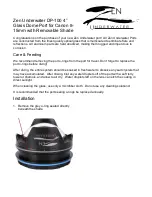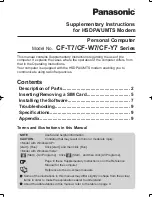
TK 61555-2-MM-EN
45
N
NO
OT
TIIC
CE
E
E
Eq
qu
uiip
pm
me
en
ntt D
Da
am
ma
ag
ge
e!!
D
Do
o n
no
ott sstta
arrtt tth
he
e e
en
ng
giin
ne
e w
wiitth
ho
ou
utt b
blle
ee
ed
diin
ng
g tth
he
e a
aiirr o
ou
utt o
off tth
he
e b
bllo
occkk..
N
No
otte
e:: If an engine runs with air trapped in the block, the engine may be damaged. The high water
temperature switch may not protect an engine that has air trapped in the block, because
the high water temperature switch is designed to protect an engine from overheating due
to failures in the cooling system.
1.
Remove the plug from the front end of the water pump below the thermostat housing as
shown (
2.
Slowly pour the coolant into the system until you see coolant at the plug fitting.
3.
Reinstall the plug.
4.
Pour coolant into the system until it appears to be full.
Figure 14.
Remove Plug from Water Pump
1.
Plug
5.
Verify that the amount of coolant that goes back into the system is approximately equal to
the amount of coolant that came out of the system.
6.
Start the engine and monitor the coolant temperature with the unit engine coolant
temperature gauge, or by using a non-contact thermometer pointed at the thermostat
housing in the location of the high water temperature switch or sensor.
a.
When the temperature reaches 150 F (66 C), shut the engine off for two minutes.
N
No
otte
e:: This allows time for the thermostat to heat soak and open fully, ensuring that any
remaining air will be purged out of the engine block when the engine is restarted.
7.
Restart the engine and run it in low speed.
a.
Remove the cap from the expansion tank and slowly pour coolant into expansion tank
until it is full, then reinstall the expansion tank cap.
8.
Repeat steps 6 and 7 until the coolant level stabilizes.
Engine Thermostat
For the best engine operation, use a thermostat year-round.
Coolant Level Switch
The plastic expansion tank uses a reed type coolant level switch. The coolant level switch senses
the position of the magnetic float inside the expansion tank. When the coolant level is above the
switch, the float is in the upper position and the switch is closed. When the coolant level is below
the switch, the float is in the lower position and the switch is open.
















































